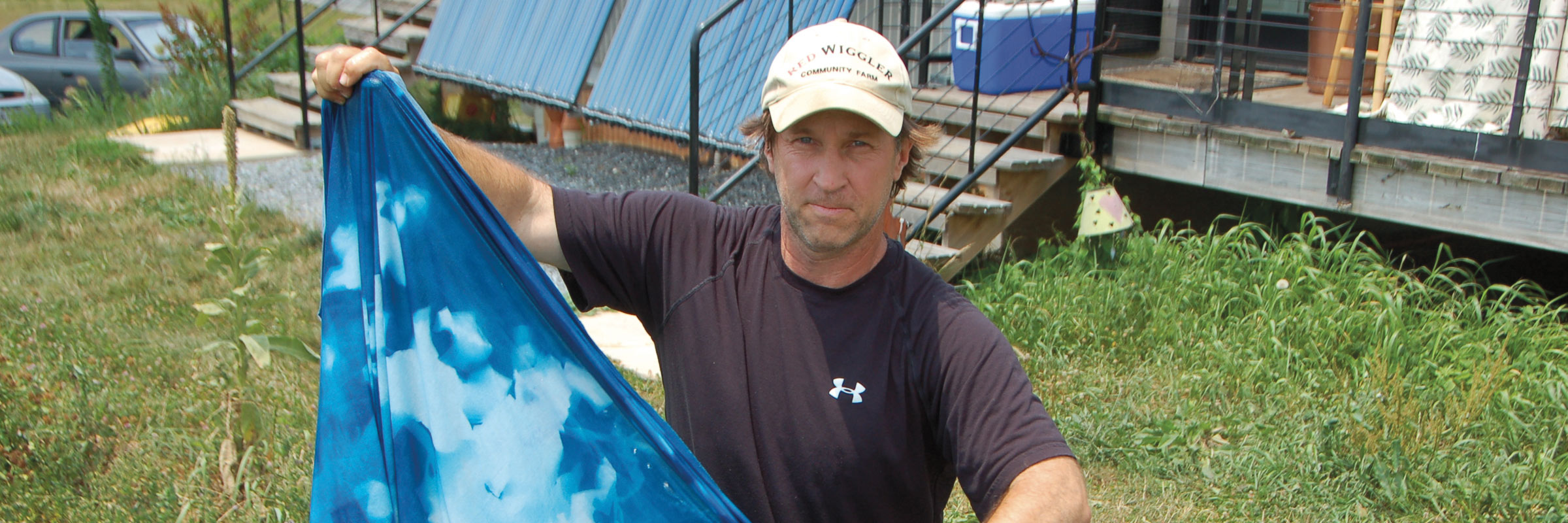It’s little wonder that 45-year-old artist and organic farmer Woody Woodroof uses the garlic plant as the centerpiece for so much of his artwork. Not only does he grow a lot of it on his 15-acre Red Wiggler Community Farm in Clarksburg, Md., about 20 miles northwest of Washington, D.C., but, as he says, “It’s an image that leads me to tell people the story of Red Wiggler, which is a story about a healthy and inclusive community.” Woodroof founded Red Wiggler 14 years ago for several reasons, chief among them being to provide himself and his employees with work that is, as he says, “inherently meaningful.” That phrase– “inherently meaningful”–is one that Woodroof would apply to the workers themselves, most of whom are developmentally disabled. In his employees, Woodroof sees vibrant minds largely unaffected by prevailing cultural standards and practices. When he first began working with them, he realized they had important lessons to impart. “I asked myself,” he recalls, “ ‘What do I have to learn here? What do they have to teach me? What is the lesson in all this?’ And the answer was, slow down. And when I did slow down, I realized I was colored by society and culture way too much…. In my late 20s, I was struggling, I was angst- driven. Developmentally disabled people showed me the humanity in that. They showed me that I wasn’t alone, that at some levels our culture was creating it and that I don’t have to buy into it. These people see the world differently.”
Now Woodroof sees the world differently, too. And it’s a perspective he shares in his art. By creating images of garlic and other “nuisance plants” like poison hemlock, sticker bushes, and ailanthus, he’s attempting to demonstrate that objects and people that are not typically regarded as beautiful are in fact exceptionally beautiful. And, fittingly, the process that Woodroof uses to create his art emerged during an era far less rushed and frenetic than our own.
The cyanotype process–sometimes called the blueprint process–was first introduced by British astronomer John Herschel in 1842. Woodroof learned its intricacies from a couple of influential teachers in Arizona, not long after instructor Kent Bowser taught him the basics of photography at Denison in the late ’80s.
“I like working in these older mediums,” Woodroof says. “They present imagery in a format that we’re not much used to. It’s unique. And that uniqueness allows us to stand in front of it a little longer and ask some questions.”
For his garlic cyanotypes, Woodroof begins with a rectangle of paper, which he coats with light-sensitive chemicals. He lays that paper in the sun and sets on top the garlic plant, parts of which he might pin down to hold them still, other parts of which he allows to rustle softly in the breeze; much depends on the effect he’s after. Fifteen minutes later, the sun has darkened to deep blue all of the paper not covered by the garlic, while the portions covered by the plant remain white or, where exposure to the sun has been minimal, some gradation of light blue. (“Cyanotype” is derived from “cyan,” Greek for “dark blue substance.”) At that point, Woodroof “fixes” the image by soaking the paper in water. To do that, he formerly employed the services of an old bathtub, but now he uses a horse trough, which allows him to work with expansive swaths of cotton and bamboo cloth.
To date, Woodroof hasn’t shown many of his cyanotypes in public settings. At New Orleans’ Homespace Gallery last winter, however, four of his garlic cyanotypes were included in the exhibit Revival: Historical Processes in Contemporary Photography. (During that exhibit’s monthlong stand, two of those cyanotypes were sold for $750 each.) In a written introduction to the exhibit, curator Richard McCabe wrote: “Digital photography has democratized the photographic image by creating a universal look, style, and aesthetic…. The photographers in this exhibition are part of a rebellion against the hegemony of digital photography.”
When asked if he agrees with McCabe’s contention, Woodroof answers elliptically, saying, “Digital photography reflects our culture. Now I can go out and shoot 3,000 pictures in a day and post them on the Internet that same day. People don’t slow down. So there’s been a resurgence in the value placed on alternative processes and ways of living. Gardening has now surpassed bowling as America’s favorite pastime. I don’t know, is that a rebellion?”

